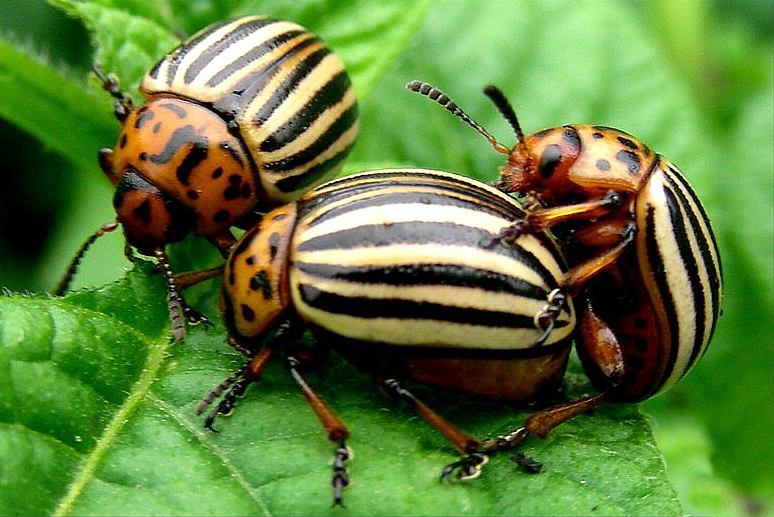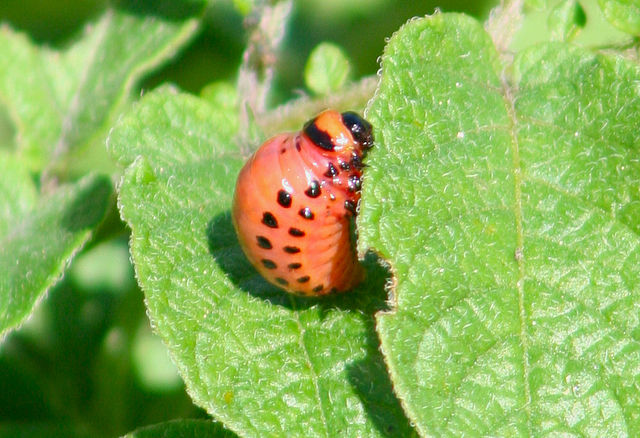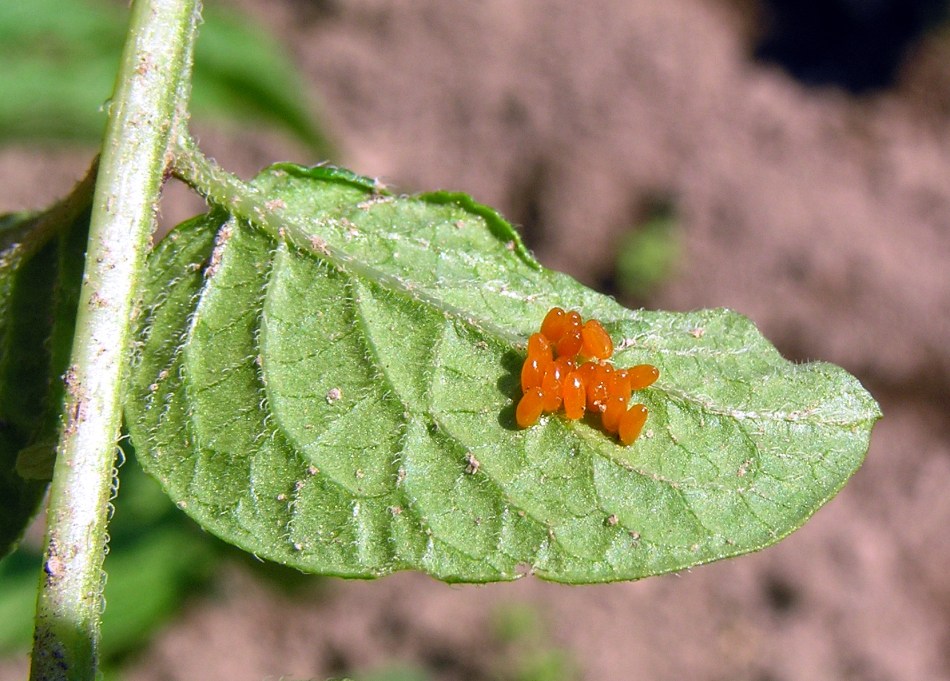First, if the beetles are not yet present on your plants, you can keep them off by covering them with a
floating row cover securely fixed to the ground. Water, air and sunlight can penetrate this barrier, but not the beetles.
For this technique to work, though, it is essential that you carry out crop rotation. In other words, you have to have planted your potatoes in a section of garden where there were no potatoes the previous year. If not, when the beetles emerge (they spend the winter in the soil at the foot of last year’s potato plants), they won’t be excluded by the barrier, but instead trapped inside it… where they can enjoy a scrumptious potato leaf meal safe from your efforts to control them!
The Horse is Out of the Barn?
If the beetles have already arrived, try one of the following treatments:
• Pick hand adults and larvae and crush them or drop them into soapy water. Or, in the case of larvae, just knock them to the ground, as at that stage they don’t have the ability to climb back onto the plant;


 Adult potato beetles.
Adult potato beetles. Larva.
Larva. Potato beetle eggs.
Potato beetle eggs.